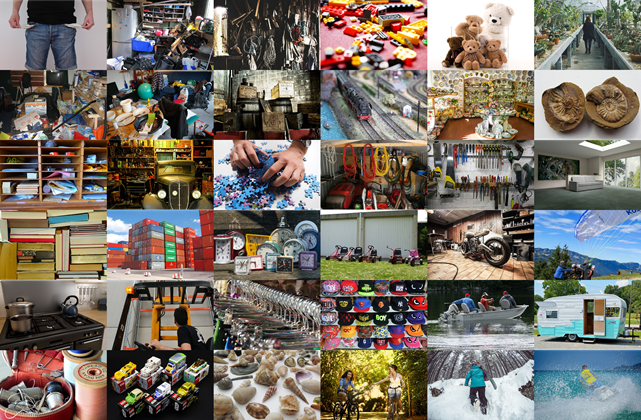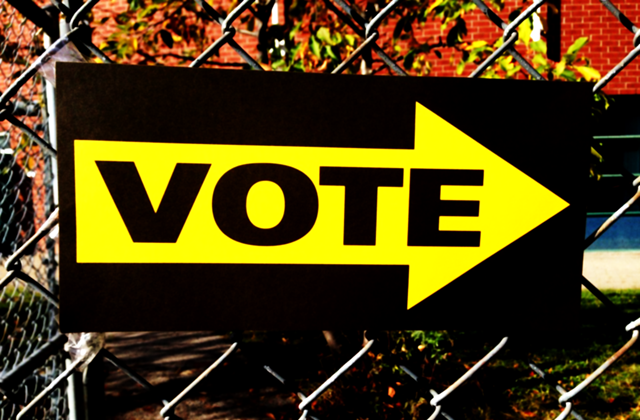In hindsight, many good ideas can seem obvious.
Putting wheels on a suitcase.
Adding a camera to a phone.
Realising such things before they happen, and developing a market for them, can be the difference between not only realising a good idea but making it a great idea.
The rise of the sharing economy, in many regards, now seems obvious in hindsight.
Frequently it combines technologies both high and low.
Taking things, which in the past were perhaps provided by individuals each operating as small businesses, and then using the power of technology to simultaneously meet the needs of people and provide a readily discoverable and searchable marketplace for this.
Platforms such as Uber and other ridesharing apps have enabled people to realise that they can use or provide a service with regular cars. In conjunction with the realisation that a car can be put to use earning money rather than sitting idle the majority of the time.
Similarly accommodation sharing platforms such as Airbnb and others, have also allowed for rooms, or entire homes, to earn money, as opposed to sitting vacant, empty, and unused.
Inasmuch as the sharing economy is bringing people together in the sense of sharing, for those so inclined, it is also the economic realisation that capital has value.
While things like cars and rooms are apparently already now well covered by parts of the sharing economy, what about everything else?
The productive capacity of an economy is largely the result of how its stock of capital is put to use.
Yet, if most of this “stuff” is sitting idle and likely also costing money to store it, there is a lot more to consider than just cars and housing.
What if You Could Rent Almost Anything?
Consider how many items people have around their homes which they seldom, if ever, use.
It’s a running joke that males are particularly notorious for buying expensive tools, which they use once for a specific task, only to store them in the garage to never see the light of day again.
Worse maybe, if they bought the tools because they were a bargain, and they might have a use for them someday which never arrives.
In both instances, they’ve paid money for items they aren’t actively using and also now have the added expense of storing the items.
Of course it can be satisfying to own things. Collection has its place.
The option, that if you need to use something and you already own it, it’s there for you to use and do with as you please.
However, as mentioned, there are storage costs. Which can be costing real money. There can be clutter. Maybe hoarding. Space being taken up which could be better used for something else.
More complete economic thinking reveals that the money spent on buying the one-off use items, could have been invested elsewhere to hopefully earn a positive return.
Additionally, if through Rentzi there’s an entire marketplace of people ready and willing to rent items, the idea of owning something “just in case it’s needed” is significantly reduced.
Sharing, Renting, and Business Opportunities
Where a platform such as Rentzi can be of benefit to both the lessor and lessee, are myriad in providing gains from trade in the broader sense of the sharing economy.
Consider the following examples:
- A person has numerous items sitting unused in their home, through Rentzi they could rent these items and receive an income, positive cash flow, for renting them to others.
- Someone is asset rich, in that they own many things, but they are cash flow poor and need the money now. The traditional approach likely would be to sell off some of the items and receive money for them. However, Rentzi provides an alternative to rent the items to others for money, while still allowing the owner to retain ownership of their items.
- Similarly, instead of someone taking an item to a pawnbroker, someone might choose to rent that item through Rentzi.
- Pawnbrokers as businesses could equally find value through Rentzi. Instead of being reliant upon reselling items, pawnbrokers could instead rent some of the items out through Rentzi to supplement their income.
- An item that is on sale can be purchased cheaply. Maybe it gets used, maybe it doesn’t. It is then owned. However, is it really a bargain? What if the item could be bought and then rented out for more than it cost to buy it in the first place? Rentzi has the potential to realise the capital value of assets and items in the sharing economy.
- In starting a new business of almost any kind, the initial capital outlay required to purchase the equipment needed for the business can be cost prohibitive. It’s unclear whether the business will succeed. A lot of money may be required just to get into the starting position. Never mind succeeding on the path ahead. Initially renting items through Rentzi could be a way to test the waters of business ideas, without the massive capital outlays.
- One-off or seasonal items could be rented through Rentzi, instead of buying them outright. This could make a lot more sense than the expense of buying the snowboard which maybe gets used one week per year, or the fancy barbeque whose main function is rusting away on the balcony. The other side to this also holds, people who own these seasonal items could rent them out through Rentzi.
- There has long existed a market for renting art and artefacts, often by corporations, in order to make their premises look more impressive. Rentzi can offer this on a much broader level, making many items available for rent. Whether it’s renting items to improve the appearance of a house for sale, or to make a party more entertaining to guests, with people renting items through Rentzi the potentials of the sharing economy are almost limitless.
Economic Analysis and Quantifying Risks
For owners of items, in deciding whether something is worth renting out, a simple approach is known as the payback method. The payback method looks at how much an item costs (a negative or an outflow of cash) and how long it will take to recoup the cost (through positive or inflows of cash).
For example, suppose a hammer cost $15 to purchase, and it is rented out for $5 per year.
The cash flows required to payback the initial outlay are:
–$15 + $5 + $5 + $5
Thus it will take three years before the inflow of $15 from the rent pays back the initial $15 cost of purchasing the hammer.
After breaking even on the third year, into the fourth year and beyond it is profit all the way.
Or only apparently so.
Two major considerations and principles of finance which the payback method ignores are the time value of money and the risks involved in the business venture.
For example, suppose that instead of purchasing the hammer, that same $15 could’ve been invested for a guaranteed risk-free return of 2 percent per year. Ignoring taxes, then over the course of the three years, the $15 would’ve have grown to approximately $15.92.
While the cost of the $15 hammer would be paid back after three years, it is also competing against the time value of money. In that the alternative risk-free investment would be worth approximately $15.92 over the same time period.
The risks of renting out the hammer also need to be considered. While these will be addressed qualitatively shortly, it leads here into some quantitative analysis and the more complete approach involving discounted cash flows, and what is known as net present value (NPV).
In this hypothetical situation, a guaranteed risk-free return of 2 percent per annum is available, and it is known that renting out the hammer involves some risks. Logically someone would want to earn at least 2 percent per annum on their money. Suppose that for renting the hammer out they want a return of 10 percent per year because of the risks.
Therefore after purchasing the hammer for $15, assuming that $5 in rent is received at the end of each year for three years, the net present value (NPV) of the discounted cash flows (subject to rounding) would be as follows:
NPV: –$15 + $5/(1.1) + $5/((1.1)(1.1)) + $5/((1.1)(1.1)(1.1))
NPV: –$15 + $5/(1.1) + $5/(1.21) + $5/(1.331)
NPV: –$15 + $4.55 + $4.13 + $3.76
NPV: –$15 + $12.44
NPV: –$2.56
Assuming that the 10 percent per annum required rate of return was judged correctly, in contrast to the payback method, the result of NPV method is not looking so favourable.
For a required rate of return, which can be thought as a cost of capital:
- Something with a positive NPV can be considered a good investment and one that will increase wealth.
- Something with a zero NPV can be considered an average investment and one that will only maintain wealth, but not increase it in an economic sense.
- Something with a negative NPV can be considered a bad investment and one that will decrease wealth.
In the simple example, renting the hammer for three years gave an NPV of –$2.56, implying better investments are out there.
However, to examine a bit further the assumptions and the variables (omitting the calculations in the interest of space):
- If the hammer had been purchased instead for $10, then an NPV of $2.44 would’ve been achieved, the positive value making it a good investment that increased wealth. Of relevance here is the question of what price the item to be rented out was purchased at.
- More than likely, the hammer could be rented out more than once per year for three years. Suppose instead that it could be rented once per year for five years before the hammer is no longer usable, then the NPV is $3.95 and positive. Thus the length and frequency of the cash flows need to be considered. Which are likely to be a function of demand, and the nature of the item rented.
- Suppose that based on the prices of other people offering hammers for rent, that the $5 rent was too low and the going market rate was $6.03 per rental for each of the three years. This would give an NPV of approximately $0.00. It is not a bad investment by any means. Because it is still earning the required rate of return of 10 percent annually, but it’s more of a neutral investment in this context. Thus in terms of the rent charged for an item, both the supply and demand sides in the marketplace should be considered.
- The required rate of return was said to be 10 percent per annum, which was chosen in part to reflect something of the risk of renting out the hammer in a quantitative sense. Suppose, however, that the desired 10 percent per year return on capital was unrealistically high and things weren’t as risky as they seemed. If the required rate of return was instead 5 percent per annum, then the NPV is –$1.38. Clearly that’s still negative, but it does suggest people’s perception of risk can influence whether they consider something a good, bad, or neutral investment. Coupled with what potential returns may realistically be expected in a given market.
A Qualitative Look at Risk
Although simplistic, the above quantitative analysis gave a textbook-like approach to considering risks and investments.
For people in the real world, however, there’s often the sense of risk in ways which are not wholly captured by numbers.
Such risks as perceived, are often qualitative in nature. Under the circumstances they may be any combination of accurate or inaccurate and real or imagined.
What is new and unknown is frequently considered more risky than that which is familiar and known.
With the spread of the sharing economy, and its relative newness, there are a lot of concerns about it.
In some regards, such concerns are not unfounded; but in others, the fears are unrealistically large.
An issue with the sharing economy, is that its newness often requires people to make judgements and assess risks about individuals they know little-to-nothing about.
Unlike well-established, and often large, businesses with reputations which people tend to defer to in aggregate as an heuristic for assessing risks and making decisions, those individuals newly establishing themselves in the sharing economy may face a greater initial challenge.
For example, someone may happily eat at a large restaurant based on its reputation, branding, and recommendations from others. This more macro-level judgement often may be more important for someone (if they think about it all) than questioning who the individual is who’s actually cooking the food. In the belief that the reputation of the business overall, subsumes and accounts for anything the cook may do as an individual.
This is often also true of things such as people believing using an established taxi company is safer than using a new ridesharing app.
Yet, in both examples, it is individuals interacting and providing services to other individuals in the economy.
As a subset of the overall economy, the sharing economy often places a greater level of emphasis on the responsibility and accountability of the individual.
Now the person cooking the food, is somewhat stripped of the shield of the restaurant’s reputation.
The person driving the car, is a person driving a car. Regardless of whether the car is a taxi or a vehicle used in a ridesharing app.
In both cases, the person has not necessarily changed. Nor has the service they are providing.
Looked at as such, many concerns about the risks of the sharing economy seem disproportionately exaggerated.
People have been interacting since at least the dawn of civilisation. Society and the economy has progressed on net. It is only in more recent times that some people have felt the need to increase the role of government and its regulations.
To a major extent, the economy runs on elements of trust and good faith based on acceptable patterns of behaviour and societal norms. Strong property rights and enforceable laws help in this regard.
Risks are there, but they are generally smaller and less frequent than may otherwise be assumed.
Libraries are able to have members borrow books typically without incident, and the books can last for decades in good condition.
Interestingly, something which has arisen from accommodation sharing platforms, is that beyond people getting accommodation, some have also developed friendships with people that span the world.
Individuals, Economics, and Responsibilities
Obviously, a sharing economy platform such as Rentzi, requires the interaction of both parties in the rental transaction and this must occur twice as a peer-to-peer rental service.
Given the potential for unknowns, a major concern that has arisen is ensuring that items are safe to rent on Rentzi. This is true both for the owner of the item, and the person renting it.
As such, Rentzi has included a rating system for users to rate one another. Thus at an individual level, a person using Rentzi is accountable for their actions, which will help to establish their reputation within the sharing economy.
Additionally, Rentzi has also introduced a rental agreement and an item condition report to be completed by both parties. This helps to establish what condition an item was in before and after it was rented, and whether there’s the need for additional compensation, a matter to be resolved between the parties.
There are risks remaining nonetheless, and individuals using Rentzi need to be aware of their responsibilities and obligations. Which, along with how the peer-to-peer rental market works, are covered in more detail on Rentzi’s information webpage.
Reading of Rentzi’s Terms and Conditions is encouraged.
Individuals may also want to insure their items elsewhere before renting them as a precaution.
Sharing Economy Risks and Common Sense
Simply because someone is using a sharing economy platform, does not mean they should disregard their common sense.
If someone is new to a ridesharing app, common sense may suggest using it with a friend, in the day, in a safe part of town, and for a short trip.
As their familiarity of ridesharing grows, they can adjust their actions based upon their experiences.
Mitigating Risks
With respect to Rentzi, a useful guiding framework for owners renting their items in the sharing economy may be:
- Start Small
Rather than jumping straight in and offering big ticket, expensive items to rent, start with small and relatively inexpensive items. This allows for gaining experience of the rental marketplace, in conjunction with helping to establish a reputation and gauge the true reputations of others. - Rent Durable Items
Rent out items which are tough and durable, especially where there are questions regarding reputation. A durable item, such a hammer, is far less fragile and more likely to be returned unharmed than say a fine china vase. - Rent Locally Initially
Check who the potential renter is and where they live before renting an item to them. That they live nearby may help to mitigate some of the risks of distance, since they are effectively at arm’s length and may be less likely to skip town. - Rent Short-Term
Typically the longer someone is in possession of an item, the more likely they are to assume it is theirs and treat it accordingly. Renting items for the short-term means there’s often less scope related to the things that can go wrong, compared to what can go wrong in the long-term. - Fit for Purpose
A knife can be used as a screwdriver, but it’s generally not a good idea. Checking how someone intends to use the rented item beforehand, can help owners of items decide if they want to rent it out. It can also help with verifying the item condition report afterwards. - Charge a Fair Price
Charging a lower price than what prevails in the market for similar rentable items may increase the number of people renting the item. Maybe a good thing, with more money received as rent. However, the risk is it may attract less reputable renters. A higher rental price may discourage them.
The Possibilities of the Sharing Economy through Rentzi
As new as the sharing economy is, in reality it is largely the existing economy expanding. Aided and augmented by technology.
Rather than someone being alone on the frontier, hoping to find someone else to trade with, internet connectivity is increasingly reducing this undiscovered isolation to the benefit of many. Provided they are responsible and aware of the risks.
Sharing economy platforms such as Rentzi, offer the ability to connect people and enable them to rent almost anything. Opening up not only more business opportunities, but helping people connect economically through mutually beneficial exchange.
Whether it is hardware or homeware, obscure or commonplace, Rentzi enables people to discover and establish a marketplace for practically anything they may want to rent, or own and want to rent out to others.
As Rentzi can help in realising the value of assets, perhaps it may also assist environmentally with waste reduction and help lessen the impacts of an often disposable society.
Maybe it’s better to reuse and rent something out, than to simply throw it out?
 uthinki Considered Opinion?
uthinki Considered Opinion?



